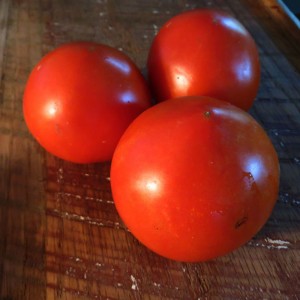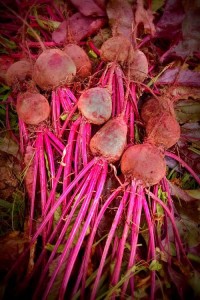How To Store Garden Vegetables

By July all the work of planting, growing and weeding your garden is paying off. You're bringing in bucket loads of fresh fruit and vegetables. Proper storage of produce keeps it fresh and ripe until you are ready to eat or preserve it. Storing produce in ideal conditions also improves its taste, texture and appearance.
Just picked produce is at peak nutrition. All food contains natural enzymes that cause it to ripen, and eventually spoil, over time. Light, air and temperature also play a part in how fast food spoils. Storing garden produce in ideal conditions helps retain valuable vitamins and nutrients, and provides a controlled environment that prolongs shelf life.
Remember: Handle fresh food with care. Bumps and bruises break down the natural barriers of fruits and vegetables, leaving items vulnerable to pests and spoilage.
Ideal food storage conditions for pantry, fridge and freezer
 The ideal temperature range for the pantry is 50-70 degrees F. Keep the pantry dark and dry. Store fresh food in brown paper bags, cardboard boxes and bins to reduce humidity.
The ideal temperature range for the pantry is 50-70 degrees F. Keep the pantry dark and dry. Store fresh food in brown paper bags, cardboard boxes and bins to reduce humidity.
Set your refrigerator temperature to 34-40 degrees F. Purchase an inexpensive fridge thermometer if your fridge doesn't provide a reading. Most refrigerators have crisper drawers with humidity controls. Set humidity at LOW to store high-ethylene emitting fruits and veggies like tomatoes, apples and pears. Store ethylene-sensitive produce such as cucumbers and leafy greens at HIGH humidity. Loose, breathable bags are best for fridge storage.
The freezer temp should be 0 degrees F or less. Freezer bags, jars and vacuum packs prevent freezer burn by controlling air and moisture.
Tips for storing common garden produce
- Wash leafy greens very well and wrap loosely in a flour sack rag. Store in fridge crisper drawer at low humidity.
- Don't wash mushrooms until use. Store in a brown paper bag in the refrigerator.
- Most stone fruits like peaches, nectarines and plums store best in the pantry. The exception is cherries, which keep better in the refrigerator.
- Tomatoes are best stored in the pantry. To prevent tomatoes from ripening too quickly, do not store them with high-ethylene emitting foods. This tip also works in reverse; if you want to turn green tomatoes red store them with high-ethylene emitters in the pantry.
- Peppers, berries and grapes always last longer in the fridge.
- Store sweet corn in-husk, in the refrigerator until use, or cut kernels off the cob and freeze.

- Root vegetables keep best in cool, dark storage. If you don't have a root cellar, store carrots, beets and turnips in the fridge for 2 weeks.
- Potatoes are light and temperature sensitive. They thrive in a cool, dark cellar atmosphere. No root cellar? Store in a covered bin in the pantry.
- Onions also require cool, dark storage, but resist the urge to store them with taters. Storing together causes taters to sprout prematurely.
3 more posts about proper food storage
- Food storage tips for pantry, fridge and freezer March 10, 2015
- You don't need a root cellar to store food Oct. 17, 2014
- Safely storing food and extending shelf life Jan. 21, 2014
Meet the next foodie!
Sign up for
Around the Table.
It's a FREE weekly e-newsletter all about food. Sign Up Today!
How To Store Garden Vegetables
Source: https://www.farmanddairy.com/news/keepin-it-fresh-how-to-store-garden-produce/269449.html
Posted by: yudeppoccanot85.blogspot.com

0 Response to "How To Store Garden Vegetables"
Post a Comment